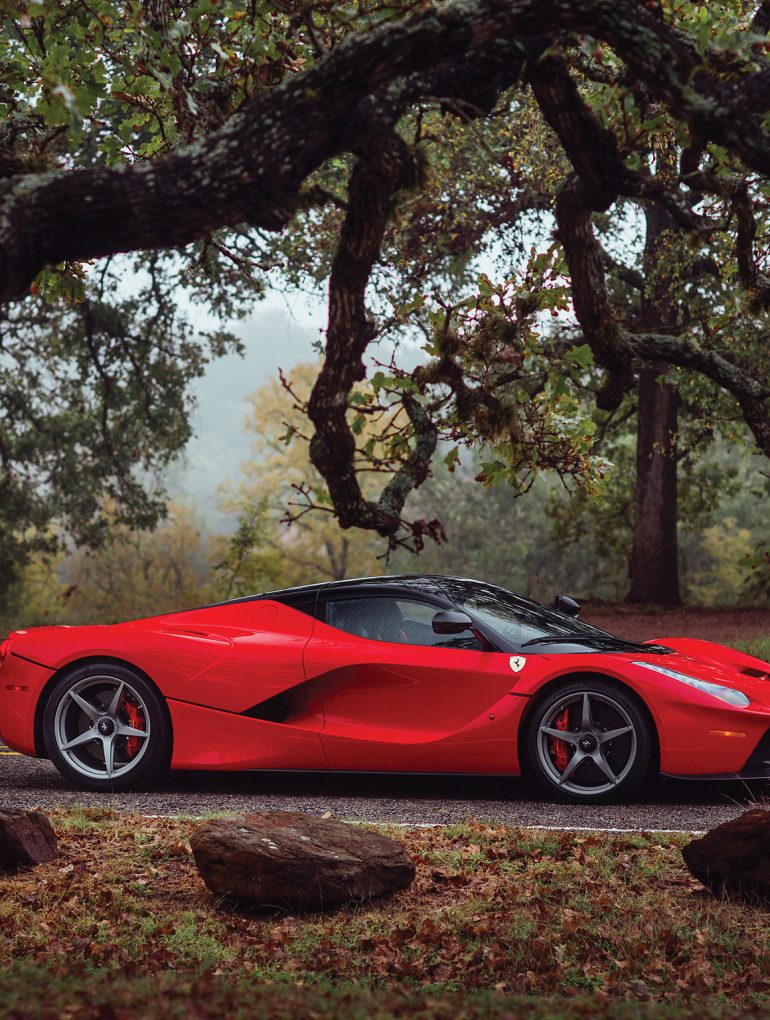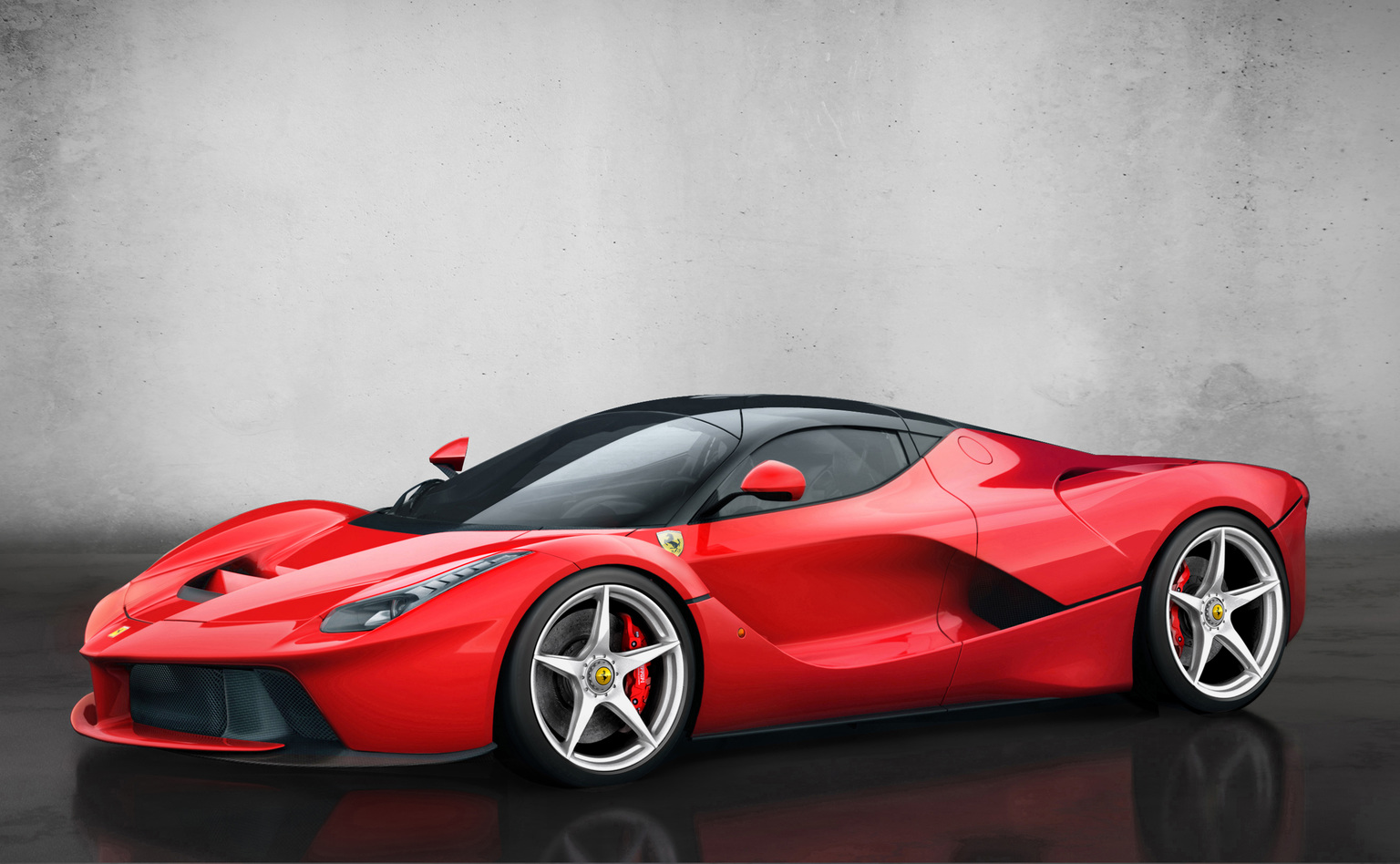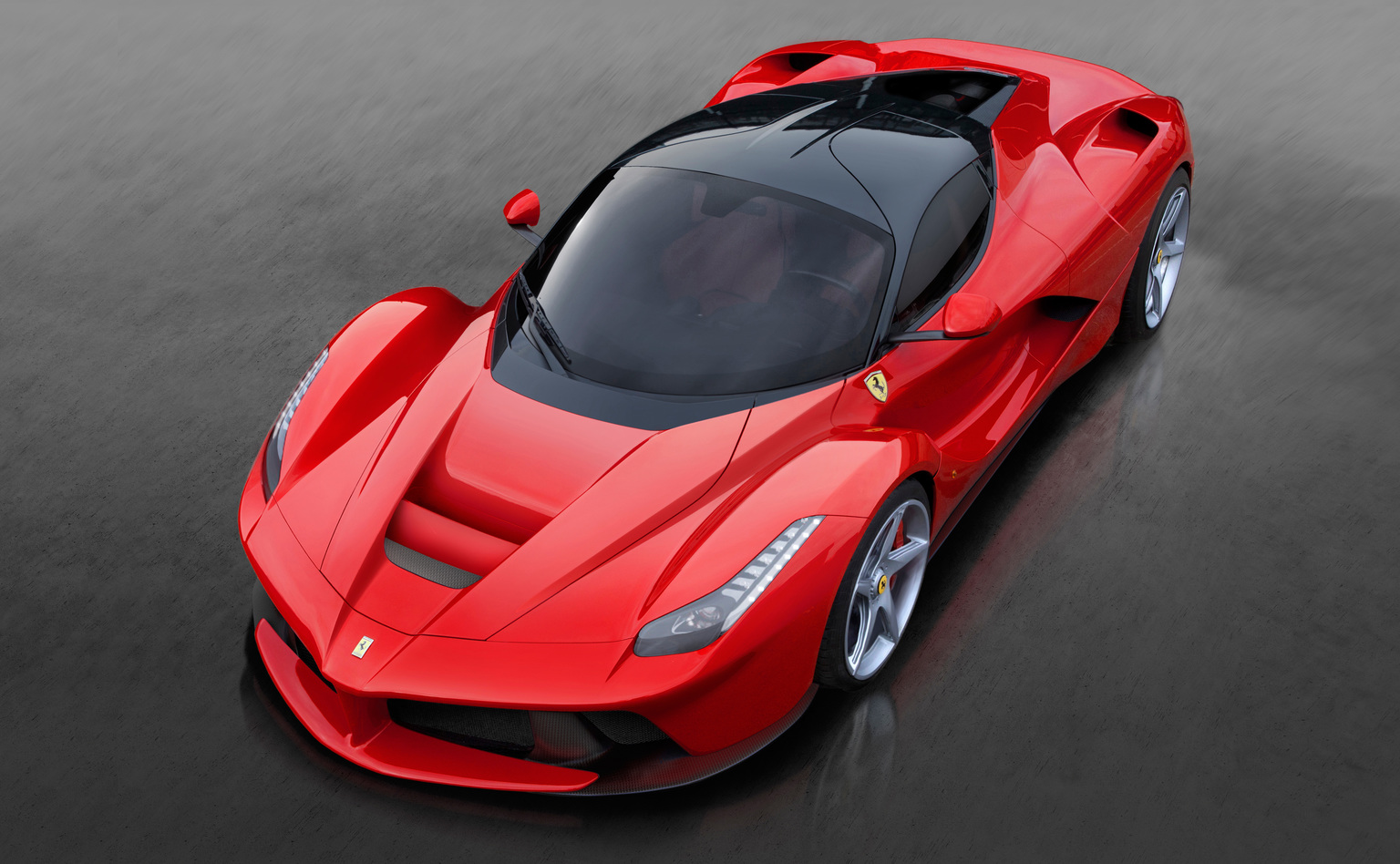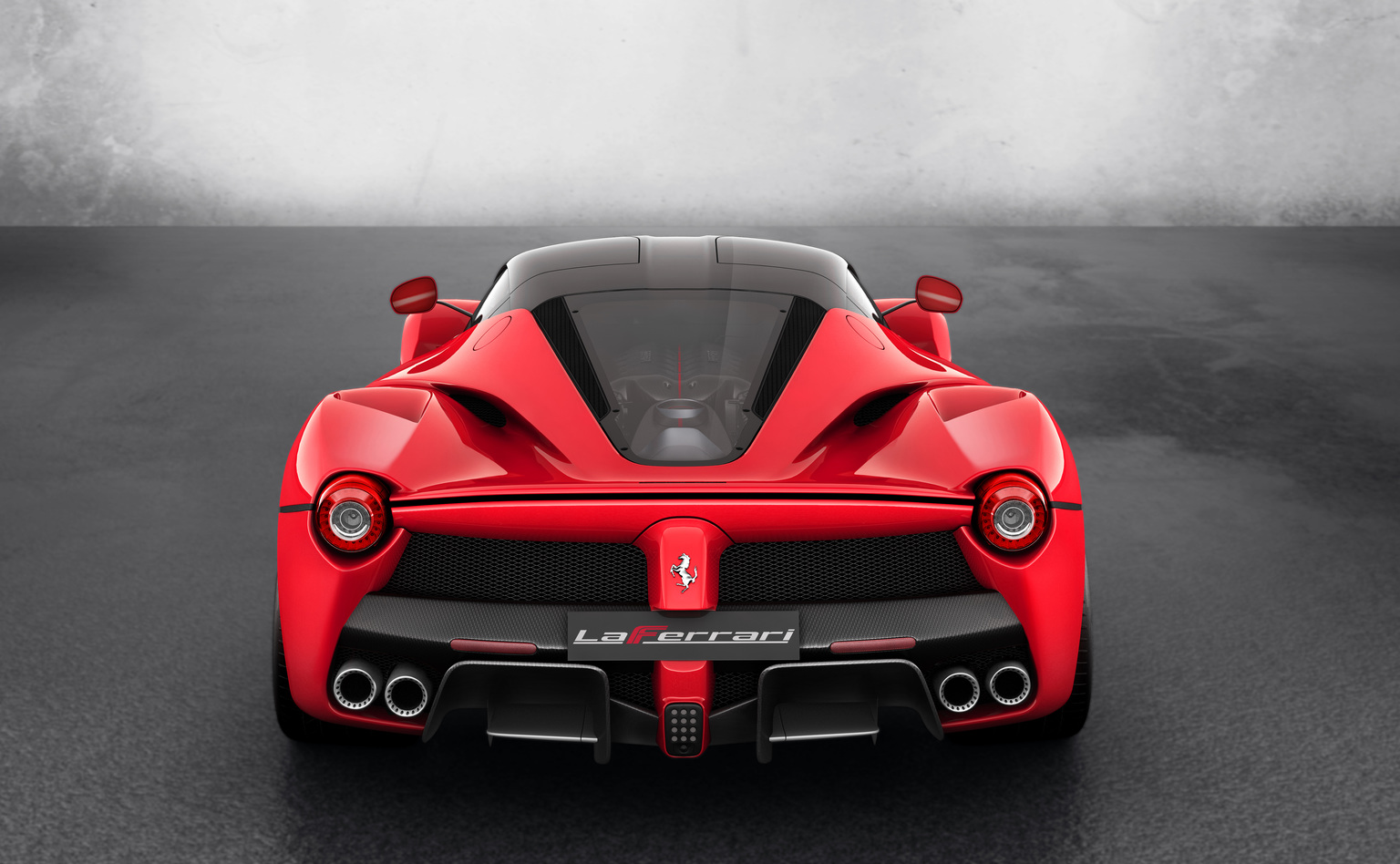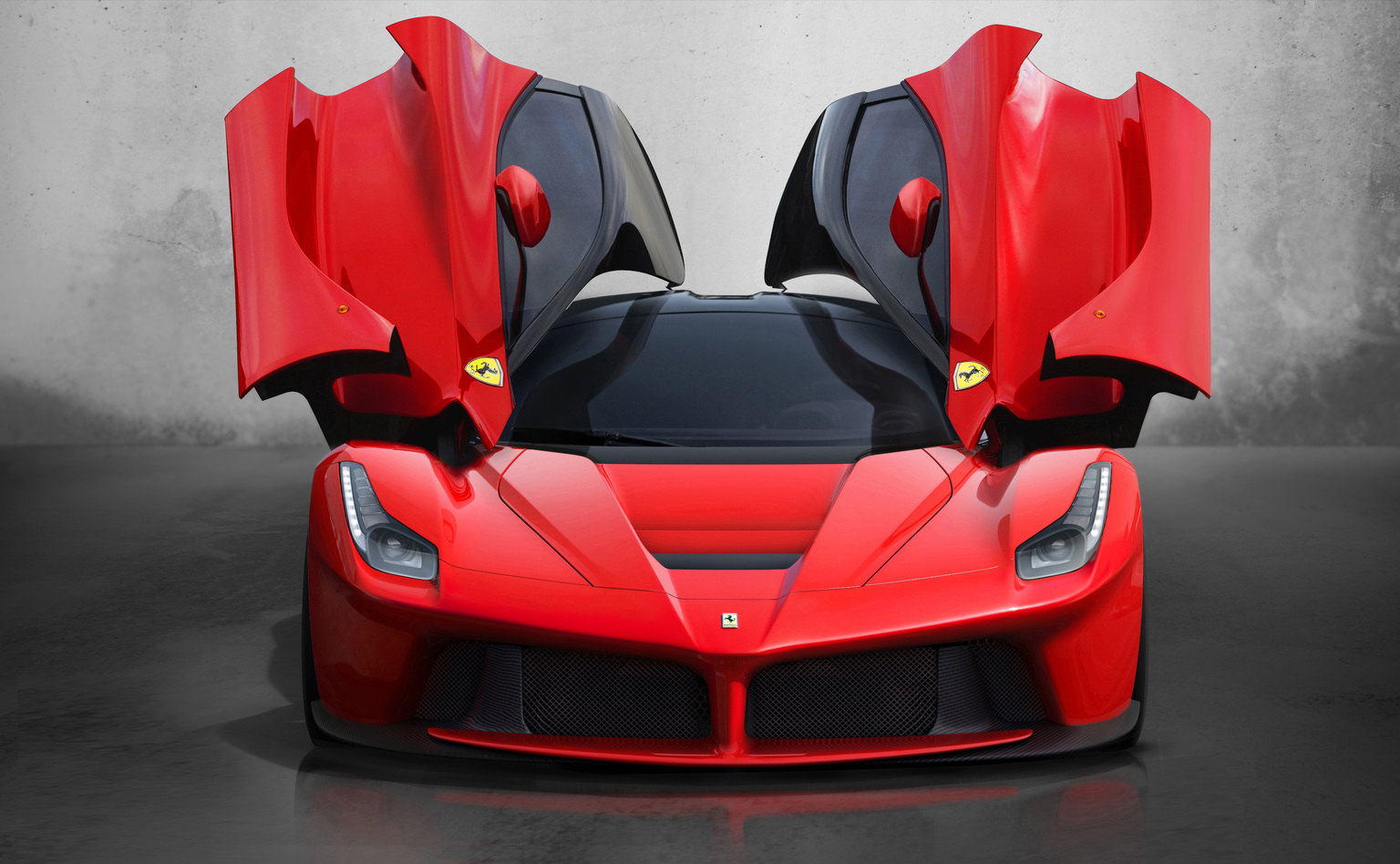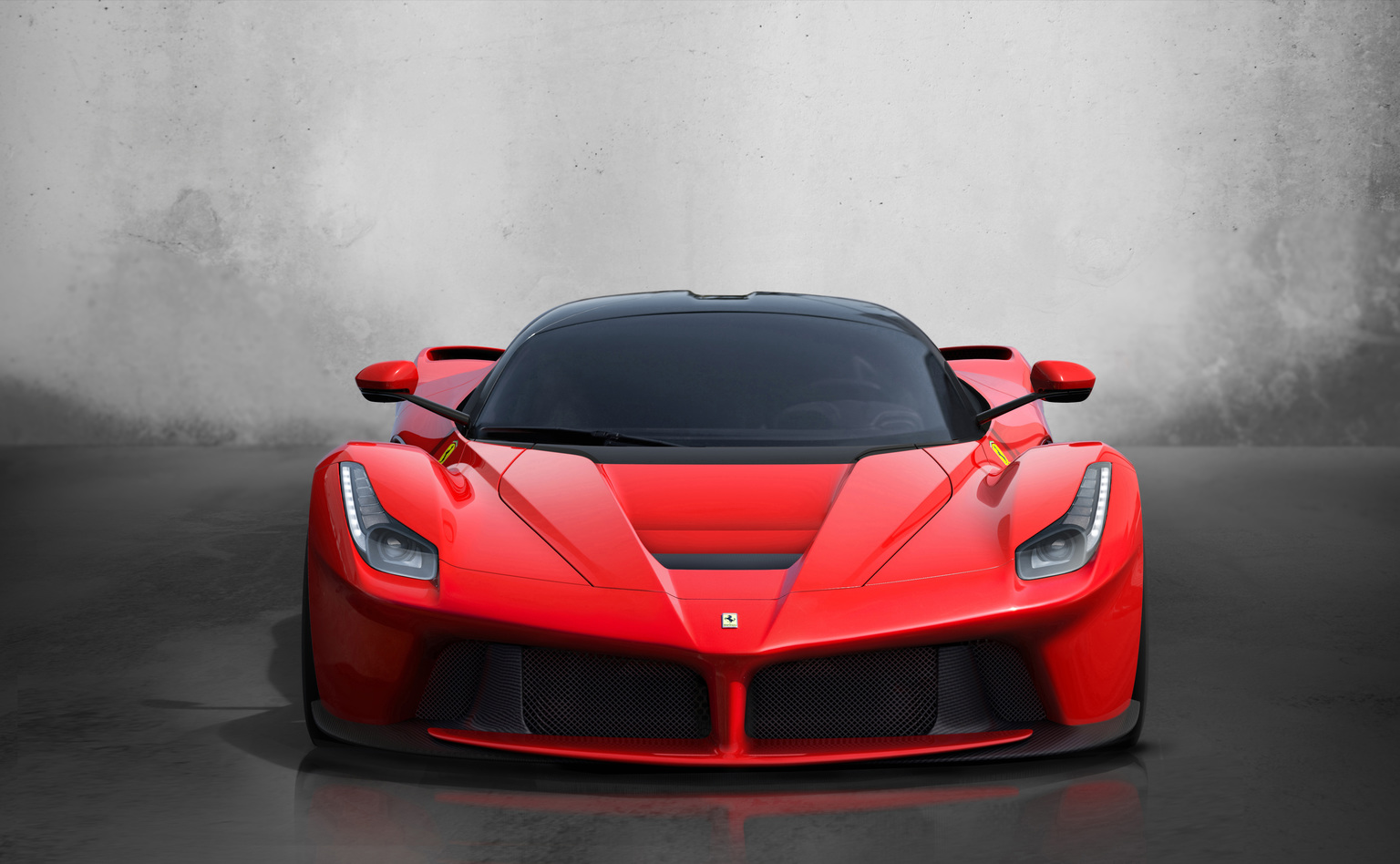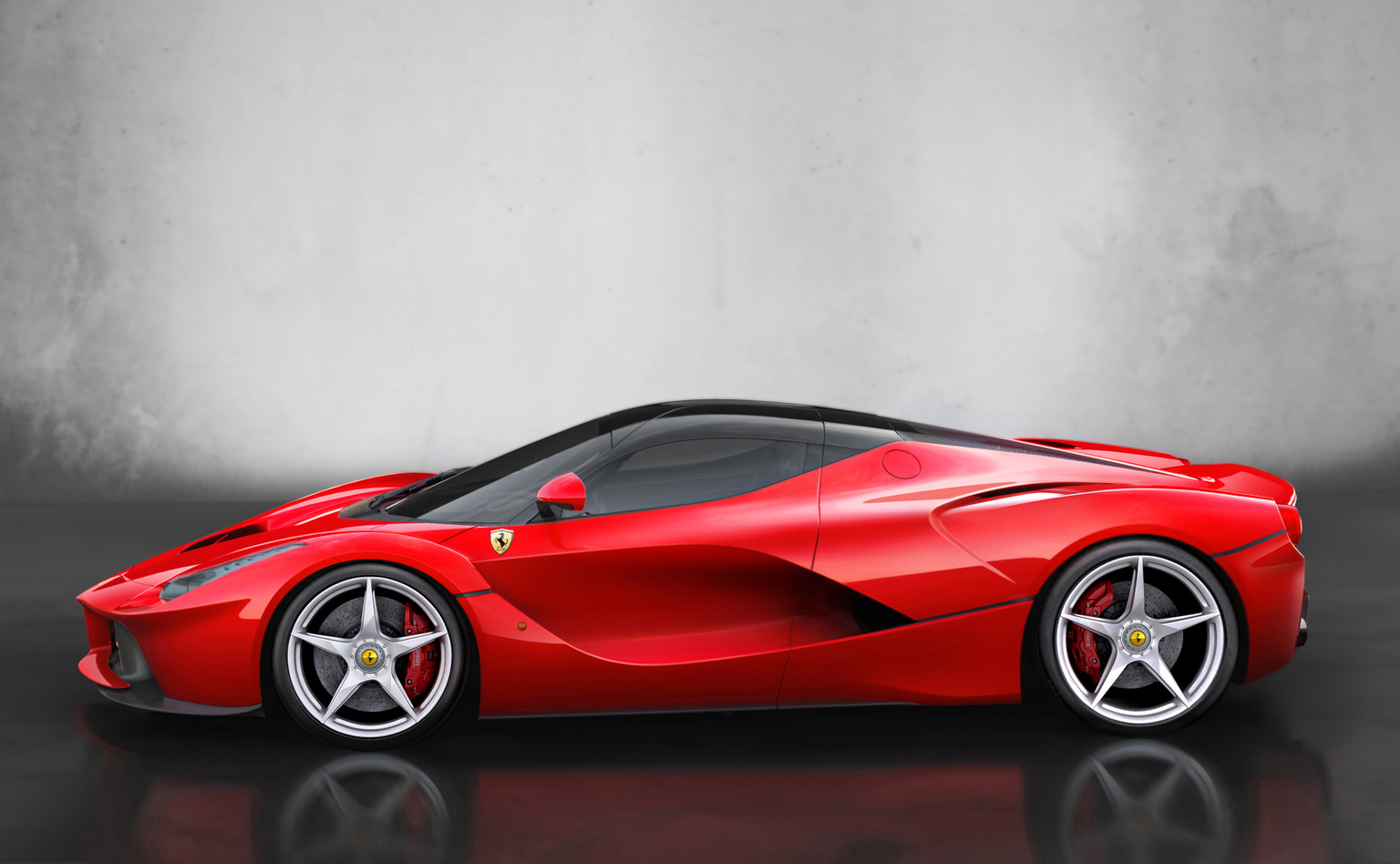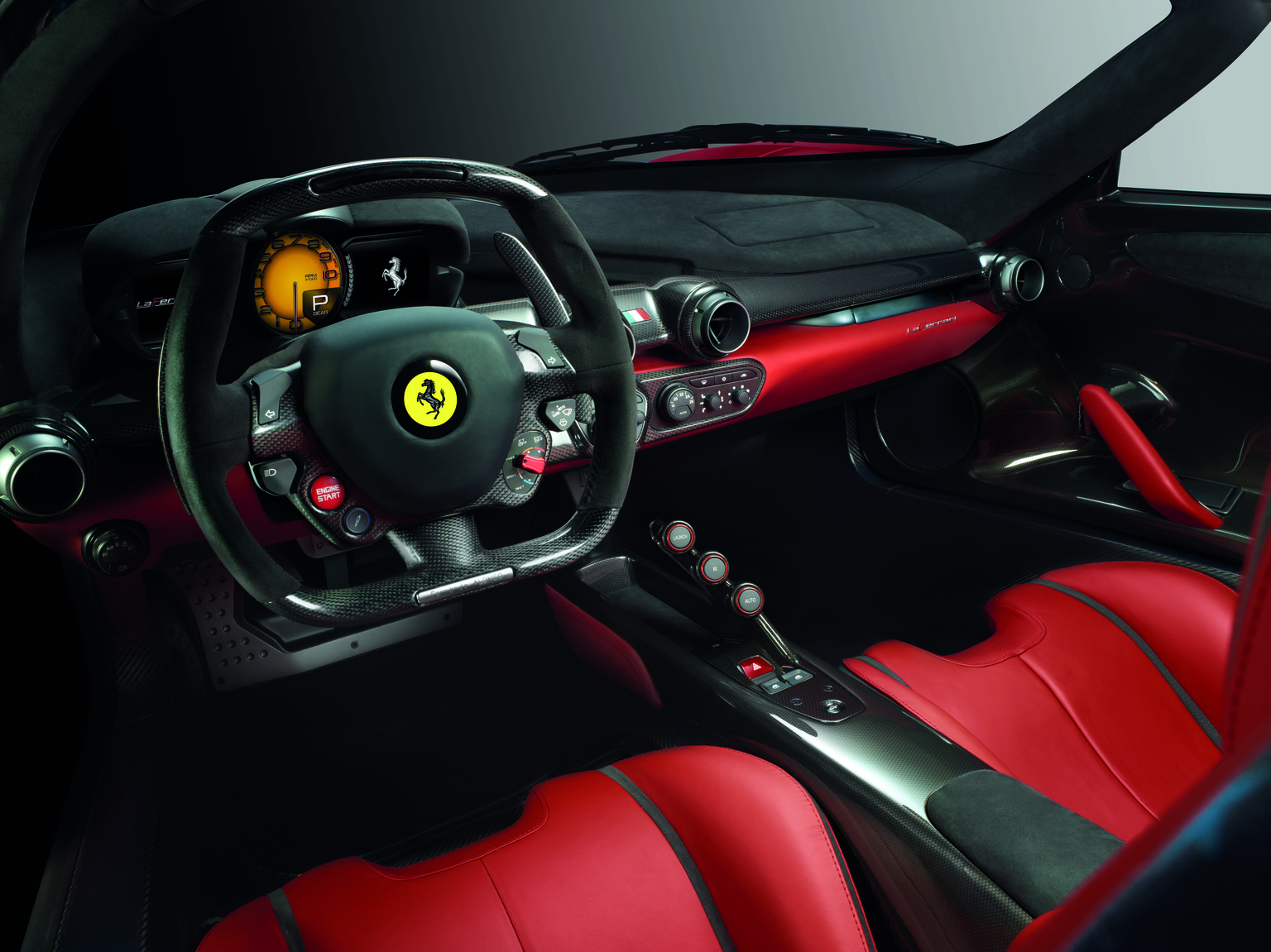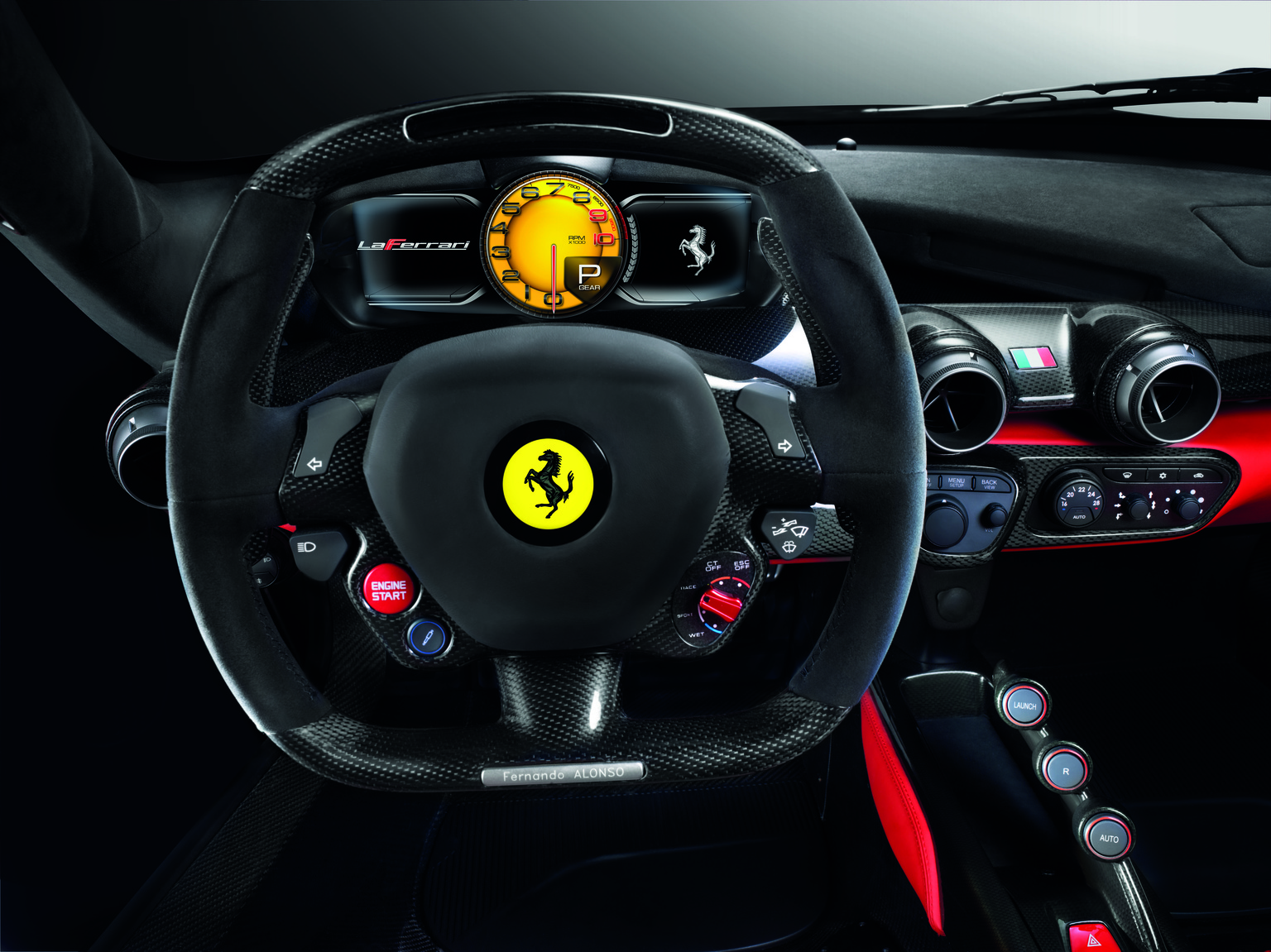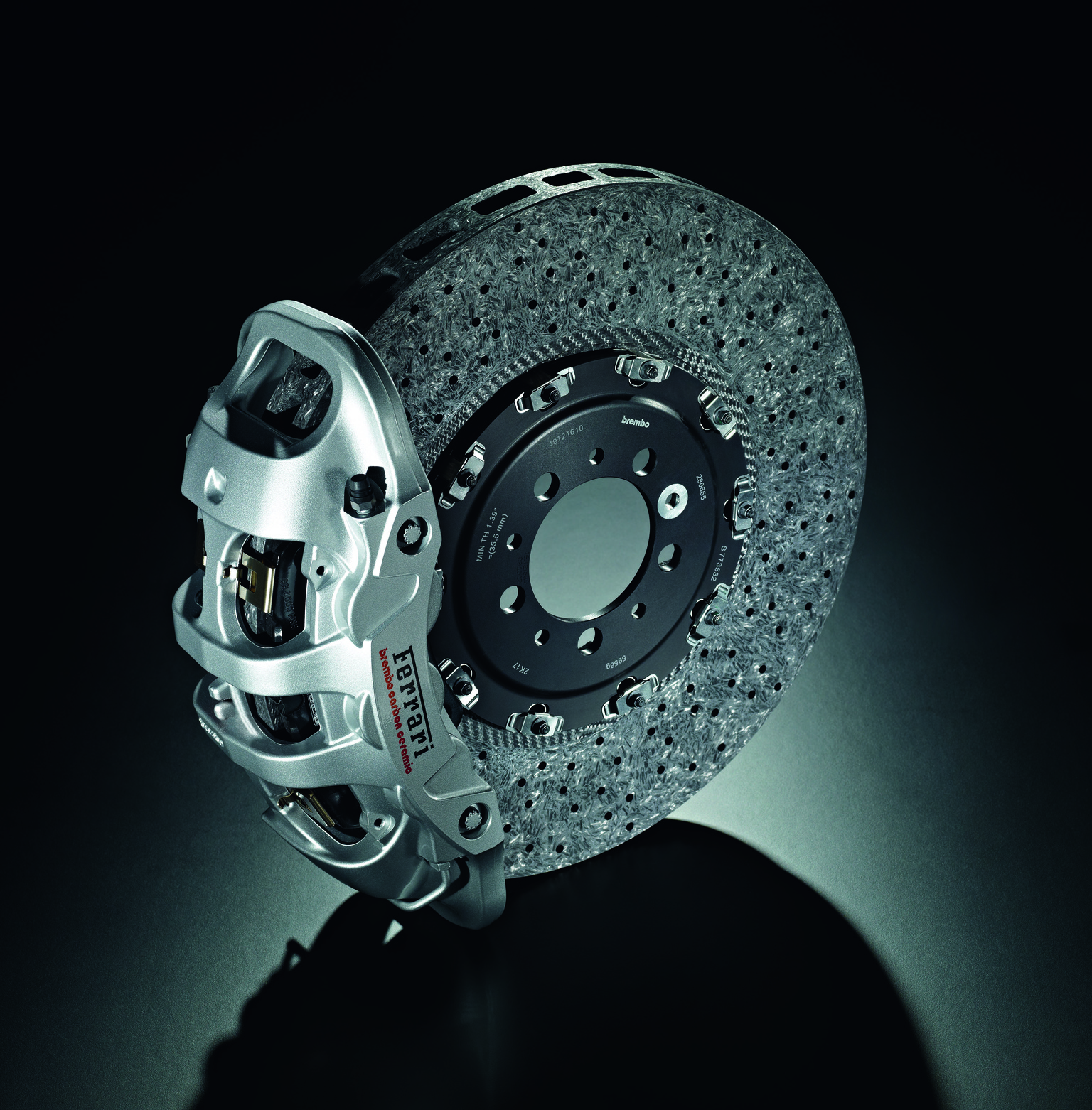Ferrari LaFerrari
Launched in 2013, the Ferrari LaFerrari wasn’t just another Ferrari; it was a breakthrough hypercar that showcased the very best of Ferrari’s capabilities. Produced in a limited run of 499 units, with an additional 209 convertible variants in the Aperta model, the LaFerrari was Ferrari’s first-ever hybrid and was built as a successor to the legendary Enzo Ferrari, setting new standards in both performance and design. Here’s a deep dive into what made the LaFerrari an icon of the automotive world.
Origins: The Birth of a Hybrid Hypercar
Developed during a time when the hypercar landscape was evolving rapidly, Ferrari designed the LaFerrari as its answer to hybrid-powered competition, including the McLaren P1 and Porsche 918 Spyder. The LaFerrari was a product of Ferrari’s F1-inspired expertise, aimed at pushing the limits of both speed and efficiency. The team at Maranello focused on creating a car that could deliver Ferrari’s signature performance while also embracing hybrid technology for a more efficient but uncompromisingly powerful driving experience.
Design & Engineering: A Fusion of Form and Function
From the outset, Ferrari invested significant time in optimizing the LaFerrari’s design. The car’s lines and shape weren’t solely about aesthetics; each element served a functional purpose, primarily focusing on aerodynamics. The LaFerrari was designed by Flavio Manzoni and his team, blending sculptural elegance with functional aerodynamics. The aggressive front splitter, rear diffuser, and active aerodynamics ensured optimal downforce while minimizing drag. The body’s sculpted appearance, butterfly doors, and integrated rear spoiler completed the look of an unmistakably futuristic Ferrari.
The LaFerrari’s chassis construction was equally groundbreaking, utilizing carbon-fiber composites typically found in Ferrari’s F1 cars. This lightweight material contributed to the car’s low weight, maximizing agility and control, while retaining Ferrari’s commitment to structural rigidity.
The Heart of the LaFerrari: A Powerful Hybrid Powertrain
At the heart of the LaFerrari was a 6.3-liter V12 engine that produced 789 horsepower, paired with a KERS (Kinetic Energy Recovery System) electric motor that generated an additional 161 horsepower. The combined output of 950 horsepower and 900 Nm of torque allowed the LaFerrari to accelerate from 0-60 mph in under three seconds and reach a top speed of 217 mph. The electric motor wasn’t just for fuel savings; it provided instant torque, filling in the gaps and enhancing throttle response, especially at lower RPMs.
This powertrain was a showcase of Ferrari’s commitment to both innovation and performance. Unlike many hybrids that prioritize fuel economy, the LaFerrari’s hybrid system was developed purely for performance, making it one of the most powerful hybrid road cars ever built.
Performance and Handling: Precision on Every Curve
The LaFerrari’s suspension and braking systems were equally sophisticated. The car featured a double-wishbone front suspension and a multi-link setup in the rear, designed to balance the powerful V12 and the added weight of the hybrid system. Ferrari’s active aerodynamics and electronic stability control systems also played vital roles in enhancing the car’s agility, allowing it to tackle corners with razor-sharp precision.
Brembo carbon-ceramic brakes provided robust stopping power, which, combined with Ferrari’s advanced ESC system, allowed drivers to push the LaFerrari to its limits with confidence. The car’s ability to deliver precise and responsive handling made it not just a fast car, but one of the most engaging hypercars ever produced.
Interior: A Driver-Focused Cockpit
Inside, the LaFerrari was crafted with a no-nonsense, driver-focused design. The seats were bolted directly to the carbon-fiber tub to save weight, with adjustable pedals and steering to ensure a personalized fit. The minimalist dashboard featured digital displays that provided essential information, ensuring drivers were focused on the road and the thrilling experience the car offered. High-quality leather, Alcantara, and carbon fiber were used throughout, emphasizing both luxury and weight savings.
Exclusivity: The LaFerrari Aperta
In 2016, Ferrari celebrated its 70th anniversary by unveiling the LaFerrari Aperta, an ultra-limited edition open-top variant of the LaFerrari. Only 209 Aperta models were produced, making it even rarer than the coupe. The Aperta retained the same powertrain and performance attributes as the coupe but featured structural reinforcements to handle the rigors of open-top driving. With its roof removed, the LaFerrari Aperta delivered an even more immersive driving experience, allowing drivers to hear the symphonic roar of the V12 engine even more distinctly.
Collectibility and Market Value
As the flagship Ferrari of its time, the LaFerrari has become a highly sought-after collector’s item. With only 499 coupes and 209 Apertas produced, demand far exceeds supply, driving prices well above their original sale price. Both versions have seen significant appreciation in value, with the LaFerrari Aperta commanding particularly high premiums on the secondary market. The car’s blend of innovation, Ferrari heritage, and limited production run has solidified its status as a future classic.
A Buyer’s Guide to the Ferrari LaFerrari
If you’re considering investing in a LaFerrari, here are a few key things to keep in mind:
- Service History: Due to its complex hybrid system, ensuring the car has a thorough service history from certified Ferrari service centers is essential. Any service gaps or missed appointments could indicate potential issues.
- Hybrid Battery Health: The hybrid battery is crucial to the LaFerrari’s performance, so checking its health and condition is a priority. Ferrari offers a specialized maintenance program for the hybrid components, and this should ideally be part of the car’s service records.
- Carbon Fiber Chassis and Bodywork: While the LaFerrari’s carbon fiber construction is durable, any previous damage or repairs should be carefully inspected. Any signs of previous damage could impact both the car’s value and its handling characteristics.
- Wear and Tear on Consumables: With its high-performance setup, components like tires, brakes, and suspension components can wear down quickly. Be sure to check their condition to avoid immediate additional costs after purchase.
- Originality and Authenticity: Due to its collectible nature, originality is crucial. Ensure that all components, including the paint, interior, and any accessories, are original or authorized by Ferrari.
The LaFerrari Legacy
The LaFerrari stands as a landmark model in Ferrari’s storied history, not only for its performance capabilities but also for pushing Ferrari into the hybrid era. The lessons learned from the LaFerrari’s hybrid development have undoubtedly influenced Ferrari’s current and future hybrid models. It remains a shining example of how tradition and innovation can coexist, representing the spirit of Ferrari in every rev of its V12 engine and every curve of its sculpted body.
Videos, Reviews, and Media Coverage
From track tests to in-depth reviews, the LaFerrari has captured the imagination of enthusiasts and journalists alike. Videos and reviews from notable automotive publications and YouTube channels highlight the driving experience, design details, and the incredible performance that this hypercar delivers.
Latest News and Updates
Though out of production, the LaFerrari continues to make headlines, whether it’s a record-breaking auction sale or being showcased in special automotive events worldwide. Keeping up with the latest news can provide insight into its market performance and the impact of Ferrari’s hybrid technology on future models.
Ferrari LaFerrari Press Release
Maranello, 5th March 2013 – The wraps are finally off the LaFerrari. The Prancing Horse’s eagerly-anticipated limited-series special, of which just 499 will be built, made its world debut today at the Geneva International Motor Show.
“We chose to call this model LaFerrari,” declared Ferrari’s President, Luca di Montezemolo, “because it is the maximum expression of what defines our company – excellence. Excellence in terms of technological innovation, performance, visionary styling and the sheer thrill of driving. Aimed at our collectors, this is a truly extraordinary car which encompasses advanced solutions that, in the future, will find their way onto the rest of the range, and it represents the benchmark for the entire automotive industry. LaFerrari is the finest expression of our company’s unique, unparalleled engineering and design know-how, including that acquired in Formula 1.”
For Ferrari the development of a limited-series special like the LaFerrari represents an opportunity to experiment with all the technological solutions that will later filter down onto the production cars. Of particular significance in this context is the introduction of the hybrid system which, making full use of the Scuderia Ferrari’s F1 KERS know-how, has resulted in a solution that exalts Ferrari’s fundamental values – performance and driving thrills. The hybrid technology used, known as HY-KERS, represents the perfect combination of maximum performance and lower emissions. LaFerrari in fact emits just 330 g/km of CO2 but without resorting to electric-only drive which would not fit the mission of this model. The HY-KERS system is, however, designed so that in future applications a car can be driven using exclusively electric power for a few kilometres and, during development testing, a full-electric version of LaFerrari achieved just 220 g/km of C02 emissions on the combined cycle.
The LaFerrari is equipped with dynamic controls that are integrated for the first time ever on a Ferrari road car with active aerodynamics and the HY-KERS system. Thanks to Ferrari’s proprietary logic which govern all the systems, the car can achieve absolute levels of performance, aerodynamic efficiency and handling without any form of compromise in any area. A very advanced and uncompromising approach was also taken with the interior design which features an HMI inspired by F1 single-seaters.
Architecture
The LaFerrari’s architecture posed the first challenge for the Prancing Horse team at the planning stage of the design. The aim was to achieve ideal weight distribution (59% at the rear) and a compact wheelbase despite the extra bulk of the hybrid system. The result is that all of the masses are situated between the car’s two axles and as close as possible to the floor to lower its centre of gravity (by 35 millimetres) and thereby guarantee dynamic handling and compact dimensions.
The layout of the cabin made a significant contribution in this regard. The seat is fixed and tailored to the driver while both the pedal box and steering wheel are adjustable. The driving position is similar to that of a single-seater and was designed after consultation with the Scuderia Ferrari drivers, Fernando Alonso and Felipe Massa, who played an active role throughout the entire development process.
The LaFerrari’s chassis features no less than four different types of carbon-fibre, all hand-laminated and autoclave-cured in the racing department using the same design and production methods as the Formula 1 car. This helped optimise the design: various functions were integrated (e.g. seats and battery compartment) into the chassis to improve torsional rigidity (+27%) and beam stiffness (+22%) whilst cutting weight.
Powertrain
The LaFerrari is the first car in Ferrari history to be powered by the HY-KERS system. The ICE represents the pinnacle of engine development and research, with a 6262 cc V12 that punches out 800 CV and revs to a maximum of 9,250 rpm, a record for an engine of this displacement. It also features a very high 13.5:1 compression ratio and a high specific output equal to 128 CV per litre. The engine is coupled with a 120 Kw (163 CV) electric motor, giving it a combined power output of 963 CV.
The high torque levels available at low revs from the electric motor allowed the engineers to optimise the internal combustion engine’s performance at higher revs, thus providing a constant supply of exceptional power throughout the rev range. Total torque generated is in excess of 900 Nm. The hybrid system is composed of two electric motors developed in collaboration with Magneti Marelli – one powering the driven wheels and the second the ancillaries – and a battery pack attached to the floor of the chassis consisting of cells that are assembled in the Scuderia Ferrari department where the KERS for the F138 is also made. The Scuderia’s expertise allowed considerable savings in weight and size of the individual components and the batteries weigh just 60 kg while providing the highest energy density possible for this kind of application.
The batteries are charged in different ways: under braking (even hard braking with the ABS active) and every time the V12 produces more torque than required, such as in cornering. In the latter instance, rather than the being sent to the wheels, the excess torque is converted to energy and stored in the batteries.
The electric motor is coupled with the F1 dual-clutch gearbox to the benefit of optimal weight distribution, but also to boosting energy efficiency as torque is instantly available to the wheels and, vice versa, from the wheels to the electric motor in recharging.
Aerodynamics
Active aerodynamics play an essential role, as they allow a complete adjustability of the car’s configuration to attain LaFerrari’s exceptional performance.
The engineers’ aim was to deliver the highest degree of aerodynamic efficiency ever achieved with any road car, with a coefficient of nearly 3, thanks to technical solutions honed with CFD analysis and fine-tuned in the F1 Wind Tunnel.
To boost efficiency, the LaFerrari sports active aerodynamic devices front (diffusers and guide vane on the underbody) and rear (diffusers and rear spoiler) which generate downforce when needed without compromising the car’s overall drag coefficient. These devices deploy automatically on the basis of a number of different performance parameters which are monitored in real time by the car’s dynamic vehicle controls, thus guaranteeing the ideal configuration on the basis of the driving conditions.
Control systems
One further innovative aspect of the LaFerrari is the integration of its active aerodynamics and hybrid system with the other dynamic control systems aboard. This means the car responds intelligently to driver inputs, making for a seamless blend of unprecedented performance and unparalleled driving emotions.
Proprietary Ferrari algorithms deliver optimal integration of the electric motor and V12 for instantaneous response. In cornering, for instance, the HY-KERS keeps the V12’s revs high to guarantee better acceleration on exit.
The LaFerrari’s Brembo braking system is also integrated with the hybrid system, and incorporates several new features, including new lightweight callipers designed to guarantee correct cooling and carbon-ceramic material (CCM) discs featuring a new composition.
The car’s extreme performance potential called for a different tyre set-up, with 265/30 R 19 Pirelli P-Zeros on the front and 345/30 R 20s on the rear.
All in all the car guarantees maximum driving thrills in every situation and performance levels are top level: 0-100 km/h in less than 3 seconds and 0-200 km/h in under 7 seconds, a lap time at Fiorano of under 1’20” – 5 seconds faster than the Enzo and over 3 seconds faster than the F12berlinetta. LaFerrari is thus the fastest road car in Maranello’s long history.
Styling The Ferrari design team led by Flavio Manzoni developed the LaFerrari’s styling working in close synergy with the engineers to emphasise the exacting link between form and function. The result is an extreme, innovative design which retains close links to the marque’s tradition. This is most evident in its side profile: the car has a sharp, downward-sloping nose and a very low bonnet which emphasises its muscular wheelarches, a clear nod to the gloriously exuberant forms of late-1960s Ferrari sports prototypes.
The LaFerrari’s body has been given a sculptural treatment heavily influenced by its clearly F1-inspired aerodynamics and a tail section that exudes uncompromising sportiness.
Inside there’s a newly-designed steering wheel sporting all the major commands, and the gear-shift paddles are now longer and more ergonomic. The signature bridge on which the F1 gearbox functions are clustered has taken on a sleek, suspended wing-like shape. The whole interior, in fact, has a fiercely track-inspired, pared-back allure.
Specs & Performance
| type | Series Production Car |
| released at | 2013 Geneva Motor Show |
| built at | Italy |
| production | 499 |
| price $ | $ 1,420,000 |
| price £/td> | £1,150,000 |
| engine | V12 |
| displacement | 6262 cc / 382.13 in³ |
| bore | 94 mm / 3.70 in |
| stroke | 75.2 mm / 2.96 in |
| compression | 13.5:1 |
| power | 708.4 kw / 950 bhp |
| specific output | 151.71 bhp per litre |
| torque | 900 nm / 663.8 ft lbs |
| redline | 9250 |
| front tires | 265/30 – 19 |
| rear tires | 345/30 – 20 |
| front brakes | Carbon Ceramic Discs |
| f brake size | 36 x 398 mm / 1.42 x 15.67 in |
| rear brakes | Carbon Ceramic Discs |
| r brake size | 34 x 380 mm / 1.34 x 14.96 in |
| f suspension | Double Wishbones |
| r suspension | Multi-Link |
| weight distro | 41 % / 59 % |
| wheelbase | 2650 mm / 104.3 in |
| length | 4702 mm / 185.1 in |
| width | 1992 mm / 78.4 in |
| height | 1116 mm / 43.9 in |
| top speed | ~350 kph / 217.35 mph |
| 0 – 60 mph | ~2.5 seconds |
| 0 – 100 mph | ~4.8 seconds |
| 0 – 1/4 mile | ~9.8 seconds at 241.35 kph / 150 mph |
| 0 – 100 kph | ~3.0 seconds |
| 0 – 200 kph | ~7.0 seconds |
| emission | 330 g/km |


